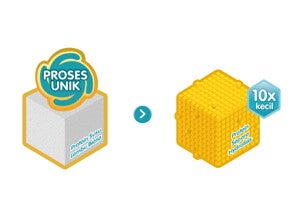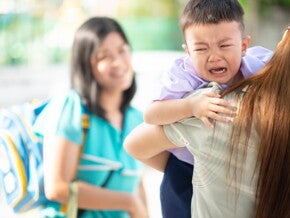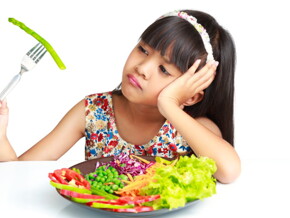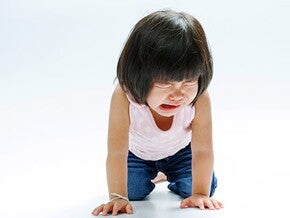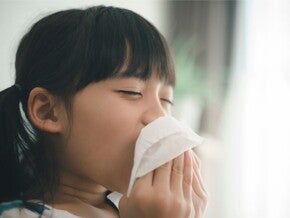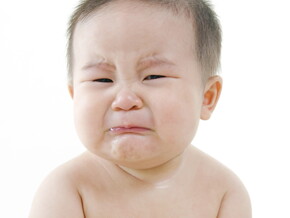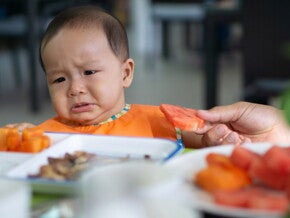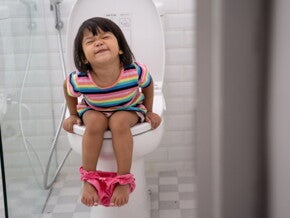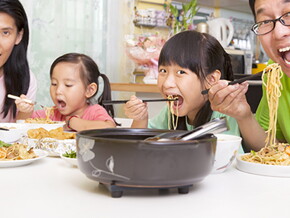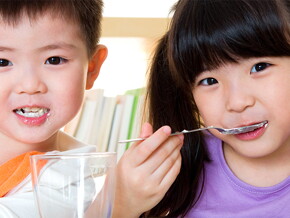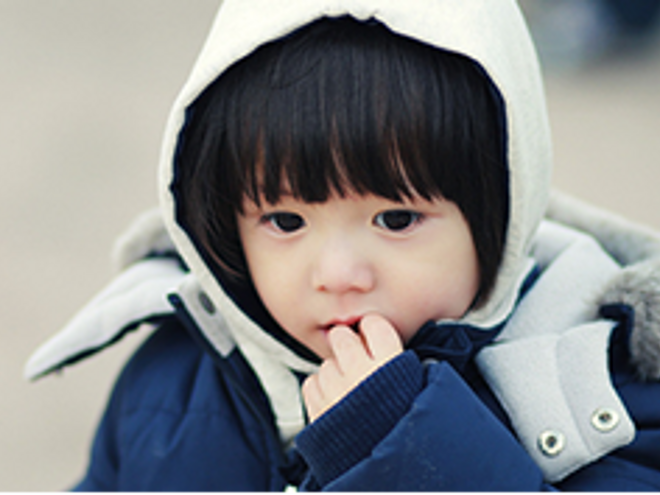
How to prevent the risk of allergies?
Nutrition for food allergy protection
Food allergies are a great concern among parents of young children. Young children are vulnerable due to their immature digestive and immune systems. Food allergies can cause misery and even endanger their lives! If a child’s food allergy is not properly managed, it may give rise to other forms of childhood allergies, such as asthma and eczema, later in his life.
Healthy tips for your child’s better living
- After four to six months, you can slowly introduce single-ingredient infant foods including fruits, vegetables and cereal grains to your child one at a time. By taking things slow, you give yourself a better chance to identify and eliminate any food that can cause an allergic reaction.
- You can also nourish him with hypoallergenic milk formulas that are specially developed to give your child the great nutrition of milk while reducing his risk of developing allergies.
Strong immunity for better protection
Thanks to recent researches and advances in food science, there are now baby foods enriched with beneficial ingredients that will help strengthen your child’s immune system and protect him from allergy attacks. Let’s look at some of these beneficial ingredients.
| Probiotics are beneficial bacteria, such as bifidobacteria, that help stimulate the maturation and function of your child’s gut health. Studies have shown that children with allergies have lower numbers of bifidobacteria compared to children without allergies. | Long chain polyunsaturated fatty acids (LCPUFAs) are beneficial types of fats that play important roles in reducing the risk of allergies. Studies show that a LCPUFA, docosahexaenoic acid (DHA), can help reduce the risk of allergic rhinitis and asthma in children up to the age of four. |
References:
- Björkstén B, Naaber P, Sepp E, Mikelsaar M (1999). The intestinal microflora in allergic Estonian and Swedish 2-year-old children. Clin Exp Allergy 29:342-346
- Nafstad P, Nystad W, Magnus P, Jaakkola JJ. Asthma and allergic rhinitis at 4 years of age in relation to fish consumption in infancy. J Asthma 2003;40:343-8
Help! My child is allergic to certain foods!
Food allergies are a great concern among parents of young children. Young children are vulnerable due to their immature digestive and immune systems. Childhood allergies can cause misery and even endanger their lives! If a child’s food allergy is not properly managed, it may give rise to other forms of allergies, such as asthma and eczema, later in his life.
What cause food allergies?
All kinds of food can cause allergic reactions, but common culprits in young children are eggs, cow’s milk, peanuts, soy and wheat.
If your child shows these symptoms after eating a certain type of food, he may be suffering from a food allergy:
- Swelling of the tongue and throat
- Breathing difficulties
- Hives
- Vomiting
- Diarrhoea
- Abdominal cramps
Always consult a doctor so that he can properly diagnose your child and tell you how to manage your child’s childhood allergies.
Managing your child’s food allergy
In addition to following your healthcare professional’s advice, you can refer to the following tips to help you avoid exposing your child to the food he is allergic to.
- When shopping for food, always read food labels carefully to make sure that the food products do not contain the ingredient that can cause allergy attacks.
- When eating out, request that the food prepared do not contain the ingredient that can trigger your child’s allergy.
- Let people who will be feeding your child when you are not around (daycare providers, nannies) know about your child’s allergy.
- Carry and know how to use injectable epinephrine and antihistamines to treat emergency reactions. Teach family members and other people close to your child how to use epinephrine. Let your child wear an ID bracelet that describes his allergy.
- To nourish your child, you can try NANKID OPTIPRO HA 3 which is less allergenic and easier to digest than regular cow’s milk.
References:
- Exl BM, Fritsche R. Cow’s milk protein allergy and possible means for its prevention. Nutrition 2001; 17 (7/8): 642-651.
- Of an expert panel meeting, Meeting report: Reducing Allergy Development in Infants, June 5, 2001.
- Sicherer SH, et al. Maternal & infant diets for prevention of allergic diseases: understanding menu changes in 2008. J Allergy Clin Immunol 2008; 122: 29-33.
A closer look at allergy attacks
When it comes to protecting your child from the misery caused by childhood allergies, it is good to first know more about them. By knowing how allergy attacks take place and the factors that trigger these attacks, you can take appropriate measures to help your child.
When an allergy attacks
The substance to which an individual is allergic to is called an allergen. Allergens are usually harmless substances that will not trigger any reaction when an ordinary person is exposed to them. When an allergic person is exposed to allergens, however, his immune system will identify these allergens as harmful substances and react abnormally, releasing various chemicals that cause allergic symptoms.
The diagram below summarises what happens when your child is exposed to allergens.
| Allergic reaction | Symptoms |
| Rhinitis | Nasal stuffiness, sneezing, nasal itching, nasal discharge, itching in ears or roof of mouth |
| Allergic conjunctivitis | Red, itchy, watery eyes |
| Atopic dermatitis | Red, itchy, dry skin |
| Urticaria | Hives or itchy welts |
| Contact dermatitis | Itchy rash |
| Asthma | Shortness of breath, coughing, wheezing |
If you suspect that your child has a childhood allergy, don’t hesitate to consult a doctor. He will run some questions and a physical exam to diagnose whether your child is allergic as well as to recommend suitable medications.
Childhood Allergies: is your child at risk?
Normally, our immune system can differentiate between harmless foreign substances (such as food proteins) and harmful foreign substances (such as germs). So when your child has an allergy, his immune system is reacting abnormally to harmless foreign substances, resulting in allergic reactions. The substance to which an individual is allergic to is called an allergen. These allergic reactions can affect your child’s eyes, nose, throat, lungs, skin, or gastrointestinal tract as his body attempts to rid itself of the invading allergen.
Is your child at risk?
Allergy cases are on the rise in many countries, including Malaysia. It is estimated that 1 in 3 Malaysians is suffering from some form of allergy! As a concerned parent, you must surely want to spare your child the misery that comes with allergy attacks. Allergies can also prevent your child from leading a happy and active life.
The tendency to develop allergies can be passed down through your genes. Research has shown that a child is at risk if one of his parents or a sibling has allergies. The risk is greater if both parents have a history of allergy. But some children can develop allergies even if none of their family members are
| Low Risk | High Risk | ||
| Family History | No defined history of allergy | One or more 1st degree family members with allergy | |
| Likelihood of child developing allergy | 5 – 15% | 20 – 40% | 50 – 80% |
If you or other members of your family have allergies, it is a good idea to ask your doctor whether your child will have an increased risk of developing an allergy. Your doctor will also be able to advise you on how to reduce your child’s risk.
Allergies
Allergic reactions occur when the body mistakenly treats a substance as harmful; in other words, a defence reaction to an attack that does not actually exist. There are many different tell-tale symptoms of an allergy. Eczema, rashes, digestion problems or respiratory difficulties are the most common. Certain hygiene and food rules can help prevent allergies. Parents should pay particular attention to their family’s allergy history.
A healthy environment:
The home is a breeding ground for allergens. Dust in the carpet and on furniture and the fur of your baby’s favourite animal are the cause of most common allergies. To limit this invasion, air the rooms in your house every day, wipe down rather than dust your furniture and use a vacuum cleaner. Using anti-mite mattress covers and changing the sheets every week can also reduce the spread of dust mites.
The main environmental allergens:
Mites and other types of dust. Microscopic and invisible to the naked eye, mites invade our homes, taking refuge in rugs, curtains, mattresses and even soft toys. Dust, however, invades the air and hangs there, where it can be easily inhaled. Allergic reactions are therefore often breathing-related, e.g. chronic rhinitis and asthma with a blocked nose and watery eyes.










